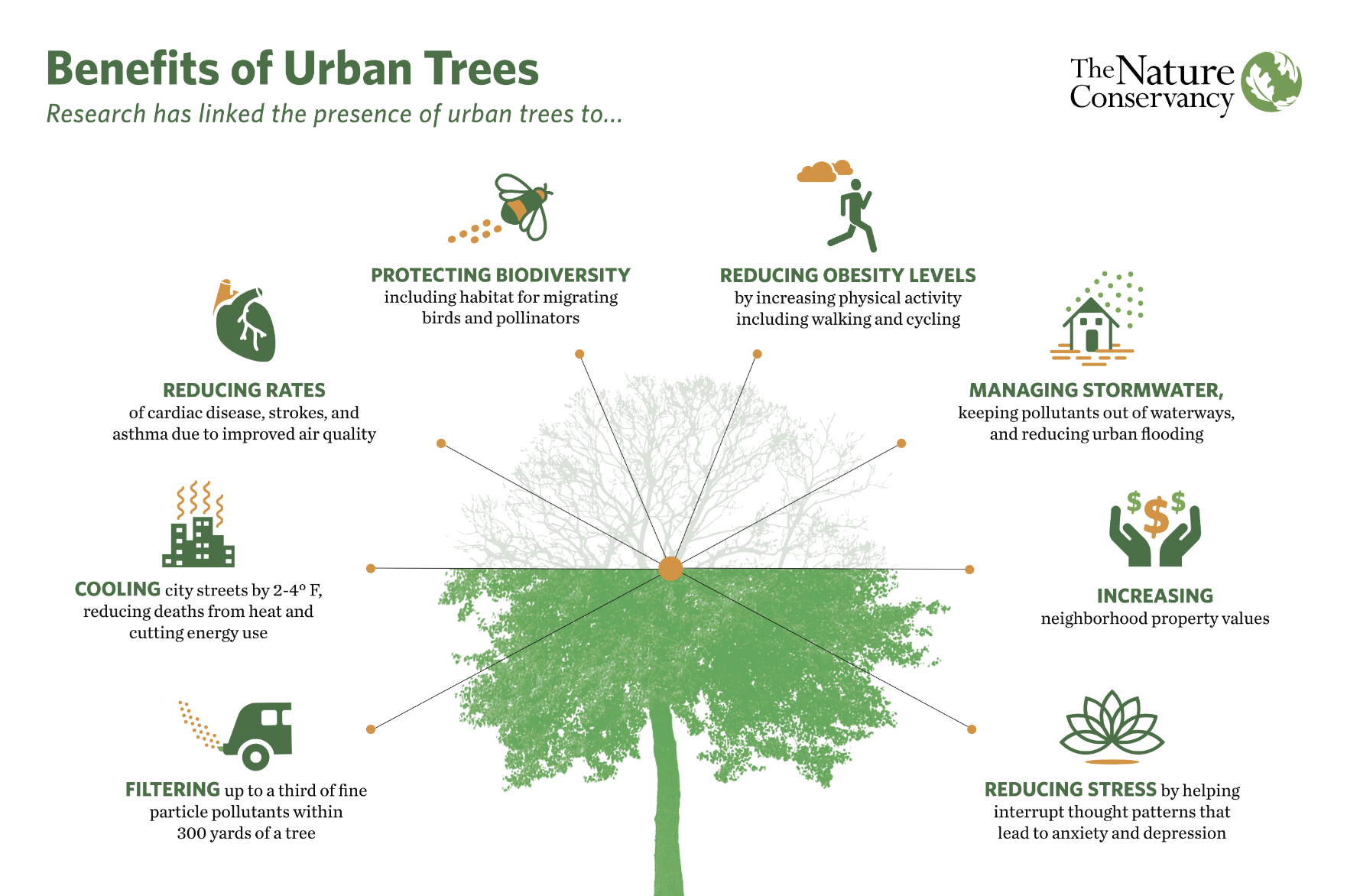Pitt’s Tree Goals
The University’s Pittsburgh campus is committed to maintaining and growing tree count and canopy on campus by 2037 (compared to 2017 baseline), while improving tree health & ecosystems in Pittsburgh. More trees, healthier trees, and expanded canopy will contribute to Pitt’s broader stewardship, along with stormwater management, ecosystem support, and mental health benefits. This work is guided by the Campus Tree Advisory Committee.
Our Pittsburgh and Johnstown campuses have Tree Campus USA designations from the Arbor Day Foundation. New tree species planted are selected following the university-wide Sustainable Landscape Design Guidelines. These guidelines strive to improve the health and well-being of our community by promoting biodiversity, integrating nature into our urban landscape, and creating synergy between the built and natural environment.
Pitt’s Tree Success
- The University of Pittsburgh’s main campus completed a tree inventory in 2019, documenting nearly 4,000 trees of diverse species and maturities that provided 29.95 acres of tree canopy coverage in 2019.
- Pitt Bradford has held a Tree Campus USA designation since 2015.
- Pitt Johnstown has been a certified Audubon Cooperative Sanctuary since 2019, when it was the first university campus in Pennsylvania and the 8th nationally to earn this designation.
- Campus Tree Advisory Committees on both the Pittsburgh and Bradford campuses work toward maintaining the beauty of the campus landscape, while protecting the environment and fostering conservation efforts within the community via the long-term preservation and expansion of tree canopy.

Benefits of Urban Trees
- Trees protect biodiversity by providing shelter to migrating birds and pollinators. (Mendenhall et al. 2016).
- Increased tree canopy can help cities manage stormwater, flooding, and preventing waterway pollution. (EPA).
- By improving air quality, trees help to reduce rates of asthma, cardiac disease, and strokes. (Nowak, 2002).
- A single tree is capable of filtering up to 1/3 of fine particle pollutants within a 300 yard radius (The Nature Conservancy).
- Trees help to reduce energy use and prevent heat-related deaths by cooling street temperatures by 2 to 4 degrees Fahrenheit (Arbor Day Foundation).
- Trees can enhance views and provide areas of refuge in warmer months. (EPA).
- Trees can contribute to reduced obesity levels by increasing outdoor physical activity. (Ulmer et al. 2016).
- More trees means increased property values. (Wolf 2007).
- Trees help interrupt thought patterns associated with anxiety or depression (Astell-Burt & Feng 2019).
- Creating healthy urban tree canopies can help address environmental injustices and racial disparities by improving local air quality and reduce urban heat island effects found to disproportionately impact BIPOC communities (1, 2, 3, 4).
Pitt's Tree Requirements
Caring for existing trees and planting new ones supports our 2037 goal of maintaining and growing tree count and canopy on campus (relative to the 2017 baseline), while improving tree health and ecosystems in Pittsburgh. As part of the campus master plan, Pitt is exploring creative opportunities to increase tree canopy on- and off-campus, including on hillsides, rooftops, streets, and more. As part of our Institutional Master Plan, the University has committed to:
- All new site designs should consider pervious or permeable pavements to promote extended root systems for trees.
- Protecting significant trees during renovations, infill development, and greenfield construction
- Tree roots, trunks, and canopies should be well outside of the limits of development.
- Tree protection fences should be utilized around the trees predicted root zone extents.
- Construction entrances should be planned to avoid tree stands
- Landscape designs should locate shade trees away from paved surfaces to encourage maturation of tree heights and canopies.
- Partnering with Oakland community and groups to replant street trees
- Monitoring health of significant trees on campus
- Utilize GIS data to identify trees susceptible to current and possible diseases, pests, and fungi.
- Propose treatments for trees that are in poor health
- Remove trees if diseases are highly contagious.
- Planting new shade trees at a spacing that factors in mature canopy size. Trees will compete for root and canopy space if planted too close together.
- Requiring designers to maintain a percentage of existing canopy and propose a percentage that aligns with the goal of increasing net tree canopy, while referencing the University’s Sustainable Landscape Design Guidelines and the Institutional Master Plan.

